Most types of fish sold in aquarium and pet shops come from tropical regions and require a heated aquarium. If you’re interested in setting up an unheated aquarium, though, you may be surprised to hear which popular “tropical” fish are actually sub-tropical and appreciate the lower temperatures found in a cold water tank!
Keep reading for a list of easy aquarium fish that don’t need a heater.
What Are Coldwater Fish?
Coldwater fish are a type of fish able to live in cooler waters compared to tropical fish. The ideal tank water temperature for coldwater fish is around or below 68°F. In fact, many coldwater species are happy in colder conditions as low as 54°F or even lower.
Generally speaking, most families have kept a goldfish at some point — in fact, common goldfish are the most popular fish species on the planet. Modern goldfish are directly descended from wild Prussian carp, which are found across the world in temperate areas, including the cooler waters of Siberia. Other members of the cyprinid family, including minnows and Koi carp, are all coldwater species of fish as well.
Although round-bodied goldfish typically prefer slightly warmer conditions, long-bodied goldfish and Koi can live perfectly fine in outdoor ponds. During the winter months, they lurk at the bottom of the pond, sheltering in the leaf litter and aquatic plants until the weather gets warmer in spring.
What Are The Benefits Of Keeping Coldwater Fish?
Coldwater fish are a perfect choice for beginners to the fishkeeping hobby. And there are a number of reasons for that.
Affordability
It’s cheaper to set up and run a coldwater fish tank than a heated one.
How so?
Coldwater fish tanks don’t need a heater, which aquarium starter kits don’t usually come with. So if you’re going for a heated tank setup, you have to buy one separately. You won’t need a heater at all if you buy fish that prefer cooler temperatures.
Plus, you won’t be paying for the extra electricity that’s required to power the heater 24/7/365.
And though we associate tropical fish with having beautiful colors, subtropical fish tend to be much less pricey than their tropical cousins and still have a wide variety of colors.
Fish Health
With a few exceptions, many coldwater fish species have a longer life expectancy than tropical ones and are not as susceptible to diseases as tropical fish.
However, you do need to keep the aquarium clean, feed the fish the correct diet, and keep an eye out for common fish diseases in your tank. Furthermore, many tropical fish species are vulnerable to temperature shock if the water is too cool or too warm. Meaning, in the event of a heater breakdown, you could easily lose most of your fish.
On the other hand, coldwater fish are typically less bothered by gradual temperature changes. Provided that you keep your tank away from heat sources and drafts, your fish should be fine.
Fewer Algae Blooms
Many fish eat algae as part of their basic diet. So, if you have some algae growing on your viewing panes and tank decorations, don’t worry too much. Like all plant species, algae need light and nutrients to grow. In your fish tank, the aquarium lights, the waste produced by your fish, and other decomposing organic waste provide the algae with a food source.
However, most species of algae proliferate more rapidly in warm water. That means your tropical aquarium will probably have more of an algae problem than a coldwater tank.
Bright Colors
Contrary to popular belief, coldwater aquarium fish come in many color varieties. In fact, the goldfish comes in brighter colors than many tropical species, offering a dazzling choice to the hobbyist of pretty much every color imaginable. They’re quite attractive fish, honestly.
Aquarium Maintenance
So, is a coldwater fish tank easier to look after than a tropical one?
Essentially, the maintenance demands of a coldwater aquarium are much the same as those of a tropical setup.
The only real difference between the two is that the coldwater tank doesn’t have a heater. You’ll still need a filter to keep the environment healthy and safe for the fish, and your tank should have a lighting unit. Light is essential for living plants to grow and thrive, and it also makes the display much more impressive to show off your fish.
A clean tank is a happy tank, so every week, you need to carry out partial water changes and clean the viewing panes. On a monthly basis, the filter media must be rinsed in tank water to keep it working efficiently. The filter media will require replacement periodically, as per the manufacturer’s recommendations.
Aquarium plants also require pruning and thinning out to keep them looking tidy.
9 Easy Coldwater Aquarium Fish
Now that you understand more about caring for coldwater aquarium fish, you’ll need to know what species you can keep.
Here’s a list of nine of our favorite fish and aquarium creatures that can live in a tank without a heater.
White Cloud Mountain Minnow (Tanichthys albonubes)
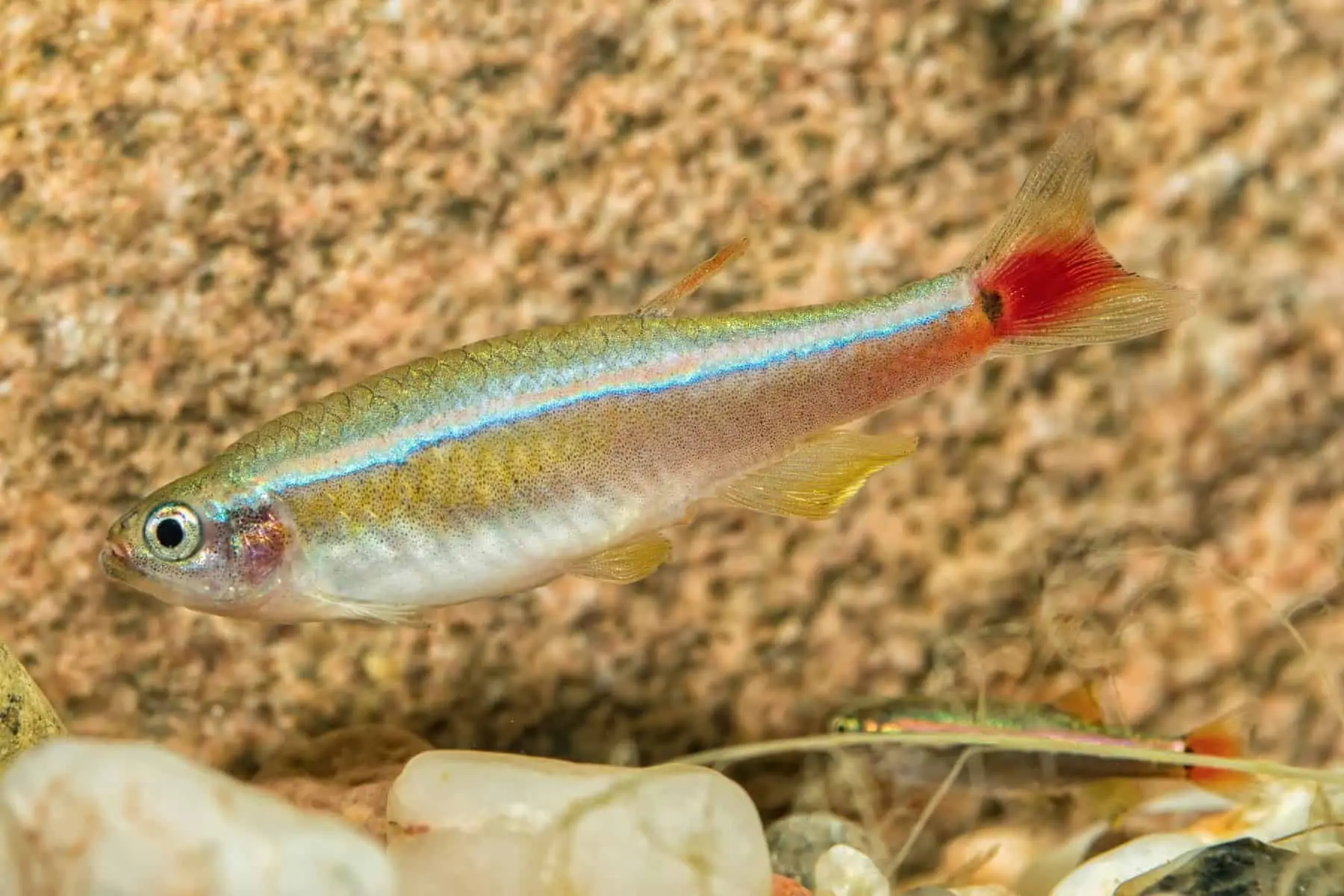
- Temperature: 60° to 72°F
- Minimum tank size: 23.5 inches long, 15 gallons
- Temperament: Peaceful, shoaling species
- Care requirements: Easy/Beginner
White Cloud Mountain Minnows (video below!) are a beautiful and popular species often sold as beginner fish that can live in a tropical tank.
Although White Cloud Mountain Minnows naturally experience seasonal fluctuations and warmer summers, they actually prefer an aquarium with a range of temperature between 60° to 72°F or 15° to 22°C. That means you can keep these fish without a heater and even outside if you live in a warm region.
These fish have a smaller and lesser-known cousin, the Vietnamese Mountain Minnow (Tanichthys micagemmae). Those fish prefer slightly warmer temperatures of between 64.5° and 71.5°F or 18° and 22°C.
The White Cloud Minnow habitat is quite easy to replicate, and that’s important for the fish to thrive and remain healthy. In the wild, the fish live in shallow streams with a low to moderate flow and possibly some plant life and vegetation. In the aquarium, you can keep a group of at least 6, preferably more, in a rectangular tank of at least 23.5″ in length, although a larger tank is better.
A dark sandy substrate with smooth pebbles as well as a relatively strong filter flow and some stem plants is perfect for these minnows. However, they generally do just as well in regular tank conditions.
Hillstream Loach (Beaufortia kweichowensis)
- Temperature: 61° to 75°F
- Minimum tank size: 31.5 inches long, 20 gallons
- Temperament: Peaceful, shoaling species
- Care requirements: Intermediate
Although the Chinese Hillstream loach is often sold as an algae eater or as being suitable for normal aquariums, Hillstream loaches, such as Beaufortia kweichowensis, naturally occur in fast-flowing waters. In the aquarium, it’s best to replicate their natural habitat as closely as possible.
Without fast-flowing, cool water of between61° and 75°F, the dissolved oxygen levels will often be too low for these fish. A strong filter and additional circulation pump(s) are definitely a good idea if you want to keep Hillstream loaches. A group of at least five should do well in a cool aquarium of at least 31.5″.
Remember that these fish eat a diet rich in algae, so to provide them with the biofilm they feed on, you need to use a strong, bright light and smooth rocks to promote green algae growth.
Cherry Shrimp (Neocaridina heteropoda var. Red)
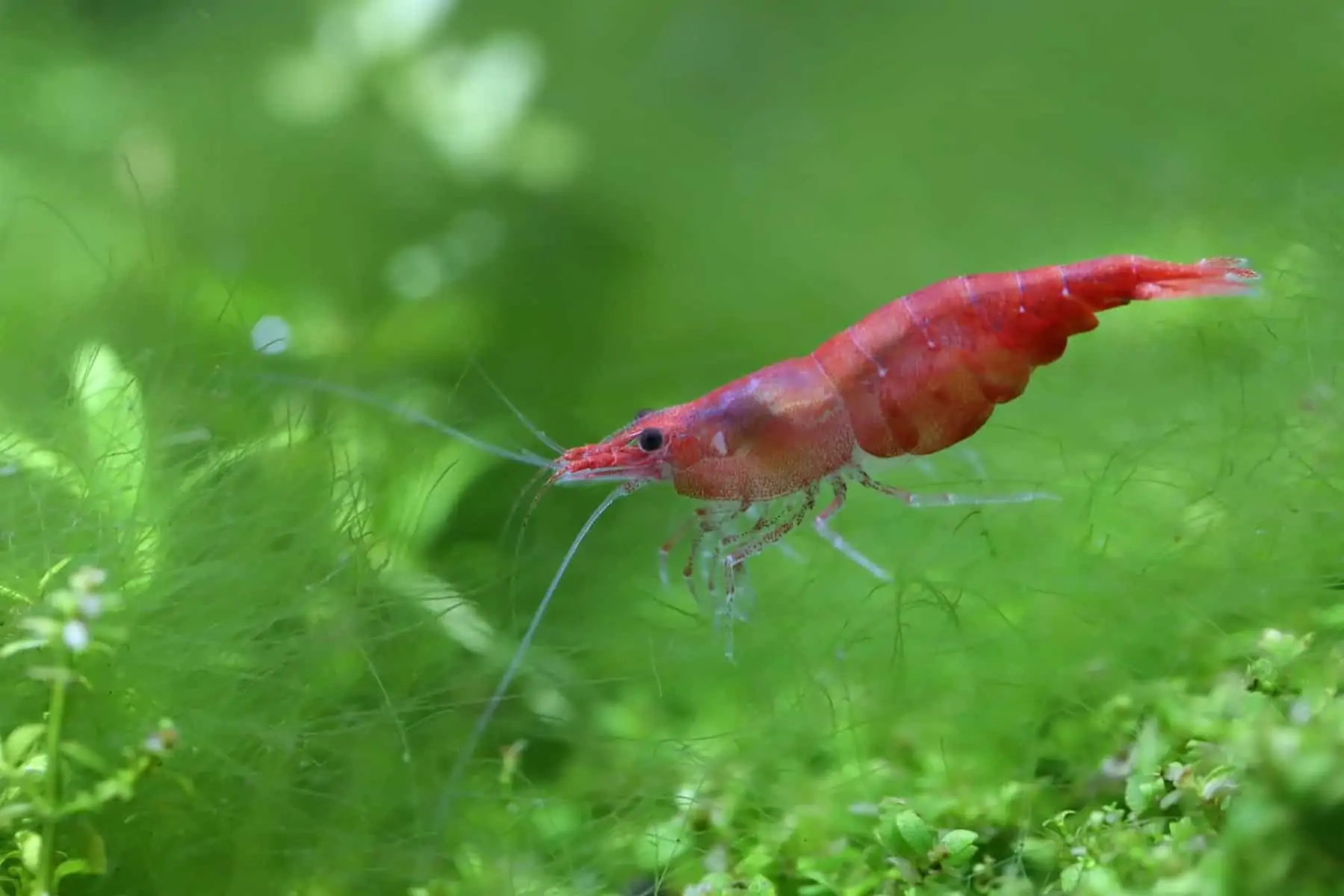
- Temperature: 57° to 86°F
- Minimum tank size: 5 gallons
- Temperament: Peaceful, sociable
- Care requirements: Easy/Beginner
Cherry shrimp are a variety of small dwarf shrimp that are much loved for their bright colors and ease of care. Although Cherry shrimp are known for their blood-red coloration, there are other color varieties to choose from, too.
For those new to the aquarium trade, these are excellent beginner shrimp that do well in pretty much any water temperature. That said, an aquarium temperature of between 57° to 86°Fis usually recommended, although these shrimp are known to survive at far colder temperatures, so you don’t need a heater for them.
Cherry shrimp should be kept in groups of at least five and can be introduced in pretty much any cycled freshwater aquarium community, although a 5-gallon aquarium is recommended at minimum. The shrimp appreciate plenty of lush planting, especially carpet plants that they can hide in.
Cherry shrimp breed very readily and quickly, so unless they have tank mates with a taste for fry, you should soon see your colony growing. Excess shrimp can be sold, used as live food, or just left in the tank: their bioload is so low they don’t pose too much risk of overstocking.
A full Cherry shrimp care sheet can be foundhere.
Fancy Goldfish (Carassius auratus)
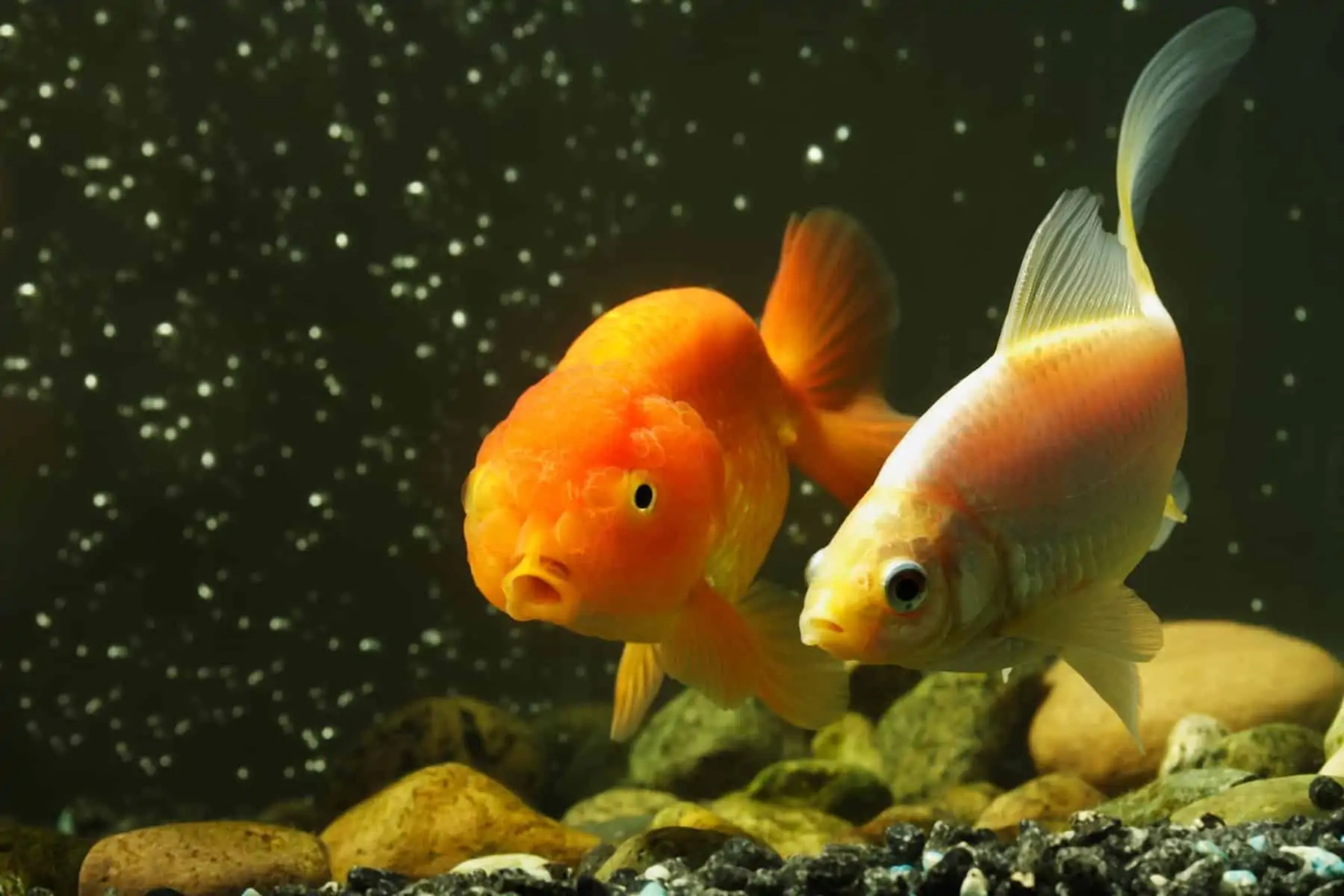
- Temperature: 62° to 71°F
- Minimum tank size: 20 gallons (per fish)
- Temperament: Peaceful, sociable
- Care requirements: Intermediate
Goldfish are probably the most popular cold water pet fish that you see kept in home aquariums. Unfortunately, goldfish are often bought as pets for kids and finish up living in a small bowl without a filter.
As mentioned above, goldfish were created in China by selectively breeding Prussian carp to produce colorful fish that could be kept in ornamental ponds. All species of goldfish can grow very large! For example, that tiny inch-long fish you bring home from your local pet store will quickly grow to measure up to 12 inches long! Even round-bodied goldfish varieties will eventually reach up to 8 inches in length, which is far too big for a tiny bowl.
Also, although they’re pretty hardy animals, goldfish are oxygen-hungry creatures that need very well-oxygenated water to thrive and remain healthy. Goldfish also produce huge amounts of waste. These fish don’t have a stomach, so whatever they eat simply passes right through the fish and back into the aquarium. So, you need a very efficient filter system to keep the water clean and hygienic for the fish. Also, goldfish tend to eat and dig up plants, so you’ll need to choose plant species that are robust and hardy if you plan on keeping a goldfish tank!
Goldfish don’t occur naturally in the wild, but they are gregarious creatures that should not be kept in isolation. A lonely goldfish will quickly become stressed and probably won’t live for very long. Ideally, you want to keep a small group of goldfish or at least a pair. That means you’ll need a pretty large tank or preferably a garden pond to comfortably accommodate them.
More information about why goldfish can’t be kept in bowls can be foundhere.
To learn how to care for long-bodied goldfish, clickhere.
To learn how to care for fancy goldfish, click here.
Paradise Fish (Macropodus opercularis)
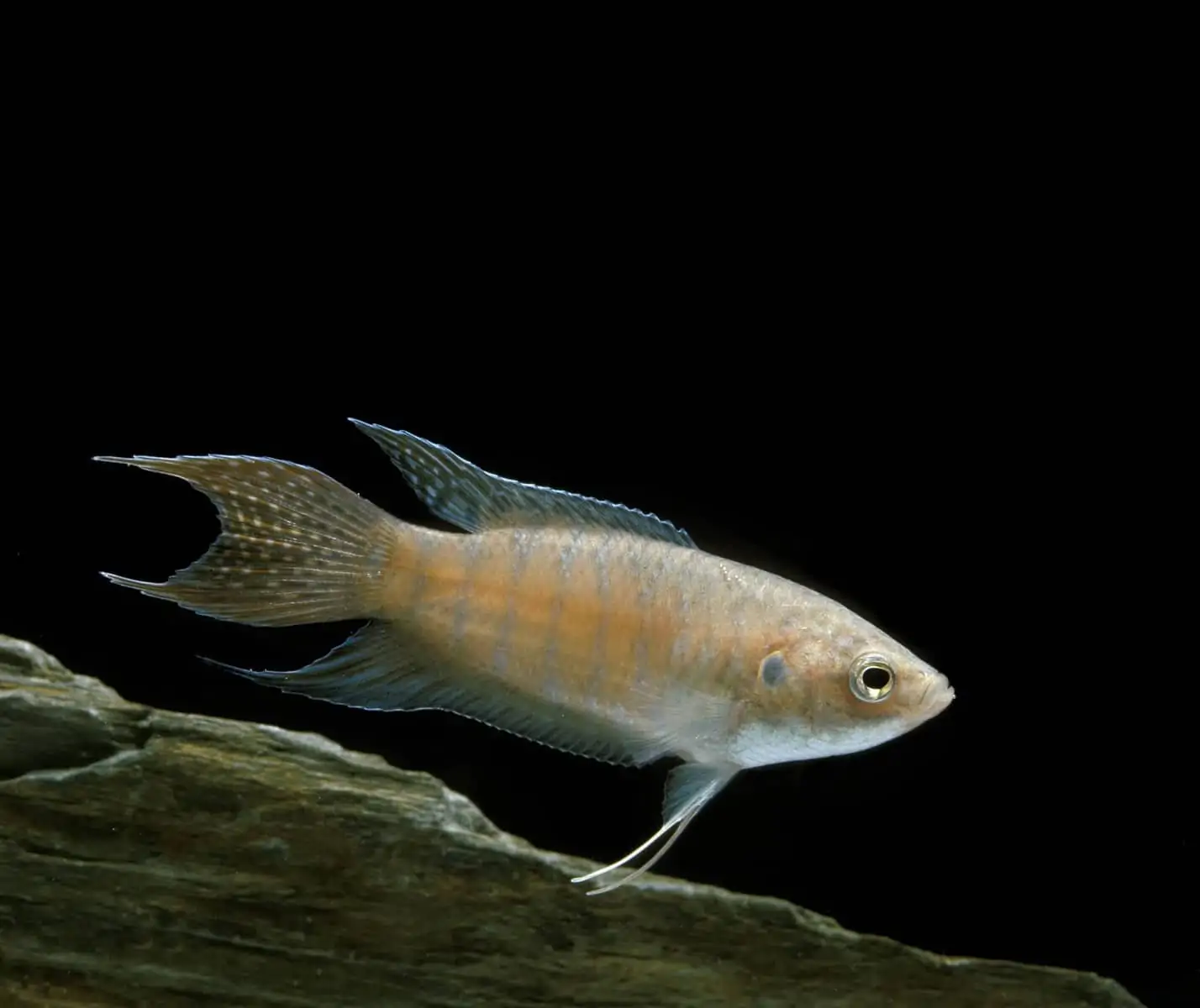
- Temperature: 50° to 71.5°F
- Minimum tank size: 20 gallons
- Temperament: Semi-aggressive, territorial with conspecifics
- Care requirements: Easy/Beginner
Paradise fish are a beautifully colored, feisty species that naturally occurs in parts of Asia.
Like the popular betta, the Paradise fish is an Anabantoid, or labyrinth fish. That means these fish possess a labyrinth organ that allows them to breathe atmospheric air. Unlike most other labyrinth fish species, Paradise fish are actually subtropical, and they can tolerate a water temperature anywhere between 50° and 71.5°F. Note that all labyrinth fish need a water temperature that’s as close to the ambient room temperature as possible to avoid the risk of damage to the sensitive labyrinth organ.
If you’re interested in keeping paradise fish, keep in mind that the males are very territorial and shouldn’t be kept with other males. A trio of one male and two females works best.
You’ll need to provide the fish with a tank of at least 31.5″ that has plenty of cover in the form of bushy plants, floating plants, and driftwood. A scattering of leaf litter can also help to mimic the species’ natural habitat of streams, rice paddies, and rivers.
Paradise fish naturally occur alongside White Cloud Mountain Minnows, and the two species make excellent candidates for community tanks. Additionally, if Macropodus opercularis doesn’t appeal to you, the genus contains some other spectacular species, including Macropodus ocellatus, hongkongensis, or erythropterus.
Dwarf Crayfish (Cambarellus and Procambarus genus)
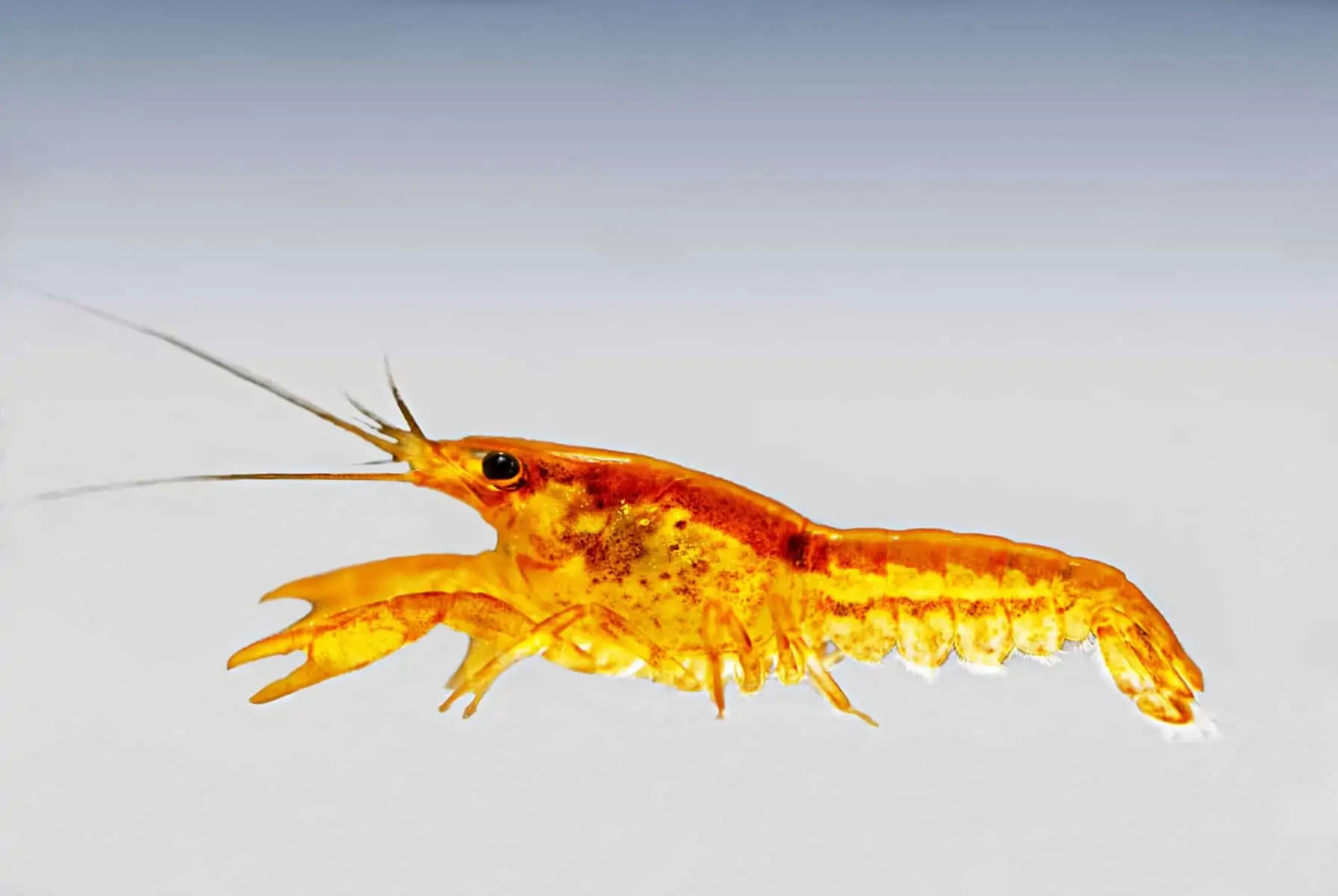
- Temperature: 57° to 80.5°F
- Minimum tank size: Depends on species
- Temperament: Depends on species
- Care requirements: Intermediate
Many of the small crayfish species that are kept in aquariums can withstand a very wide range of temperatures. For example, the popular Procambarus alleni can tolerate waters of between 57° and 80.5°F.
Larger crayfish species are very aggressive and require an escape-proof, single species setup of at least around 23.5″. Despite this, dwarf crayfish are a favorite among many aquarists for their amusing behavior and tendency to redesign and aquascape their tank by moving things around.
Dwarf crayfish species from the Cambarellus genus can also be kept at room temperature and are, as the name suggests, much smaller than their larger cousins. The Dwarf crayfish is also known to be much less aggressive and is, therefore, more suitable for community aquariums than the large varieties.
So, if you’re not ready to set up a single species tank, these small crayfish may be a better choice for you. A tank of at least around 15.5″ with plenty of hiding places is recommended.
A full Dwarf crayfish care sheet can be found here, while information about various different crayfish species that we know you’ll love can be found here!
Weather Loach/Dojo loach (Misgurnus anguillicaudatus)
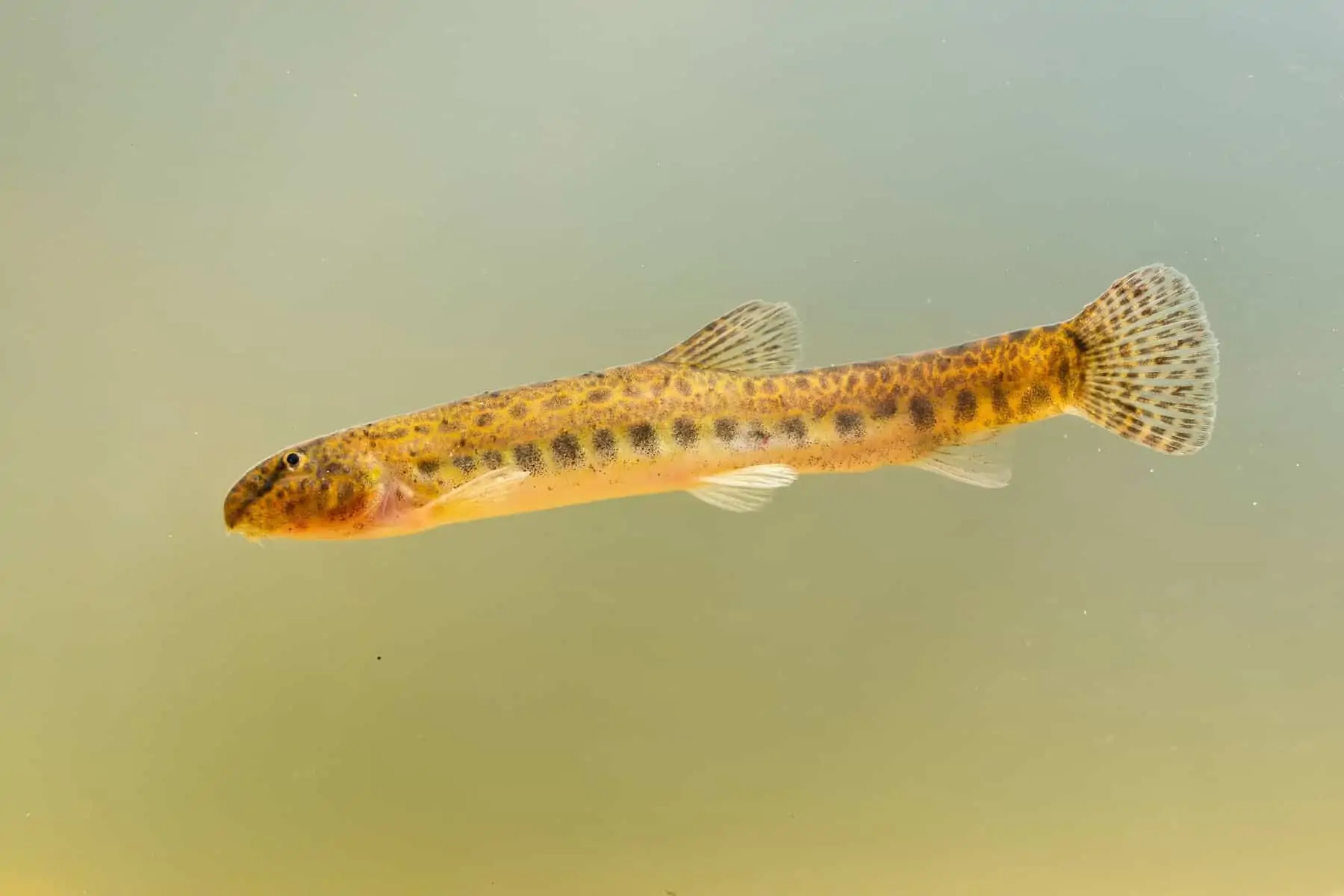
- Temperature: 59° to 75°F
- Minimum tank size: 47 inches, 55 gallons
- Temperament: Peaceful
- Care requirements: Easy/Beginner
Weather loaches are a large loach variety that are named for their ability to detect storms and react to changes in barometric pressure in their environment. These loaches are excellent fish for larger, unheated, and escape-proof setups of at least 47″. A temperature between 59° to 75°Fis considered ideal for this fish, although they can tolerate lower temperatures for a short period.
I often see aquarists keep their loaches on (sharp) gravel, but that’s not a good idea. Many loach species, including this one, naturally spend a portion of their time burrowing. For that reason, they appreciate a fine sandy substrate that doesn’t hurt their soft bellies.
Also, be sure to provide plenty of additional hiding places for these fish. Like most loaches, weather loaches like to spend a portion of the day in a dark place and don’t come out to feed and explore their environment until the light fades in the evening. So, dense planting, caves, driftwood, and rocky overhangs work very well in a setup containing this species of loach.
Zebra Danio (Danio rerio)
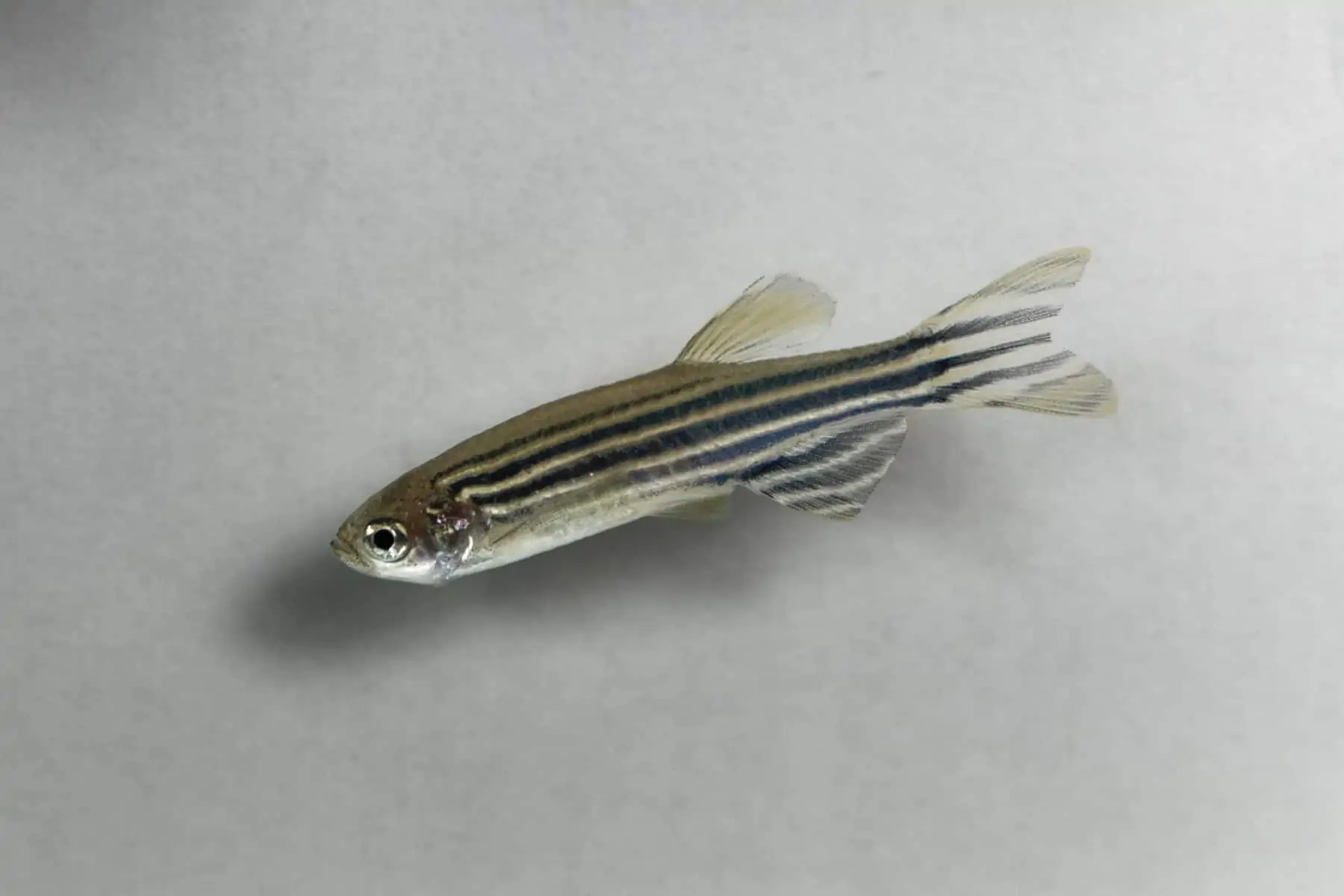
- Temperature: 62° to 86°F
- Minimum tank size: 20 gallons
- Temperament: Peaceful, schooling
- Care requirements: Easy/Beginner
When discussing coldwater aquarium fish, there’s no way we can leave Zebra danios off our list! These small schooling fish are a longtime aquarium favorite, not least because of their ability to live happily in lower temperatures. Danios are fantastic little fish in general. Peaceful, active, and beautifully colored, a school of this delightful species will look great in anything from a single species biotope setup to a regular community tank.
Ideally, you need to keep your Zebra danios in a long, vertical aquarium of at least 20 gallons. Although they’re pretty small they are extremely active swimmers that really appreciate having plenty of swimming space in which to school. For something different, choose the spotted Leopard Danio or maybe a combination of several species.
You can find everything you need to know about keeping Zebra danios in the Danio care sheet here.
Rhinogobius duospilus (formerly Rhinogobius wui)
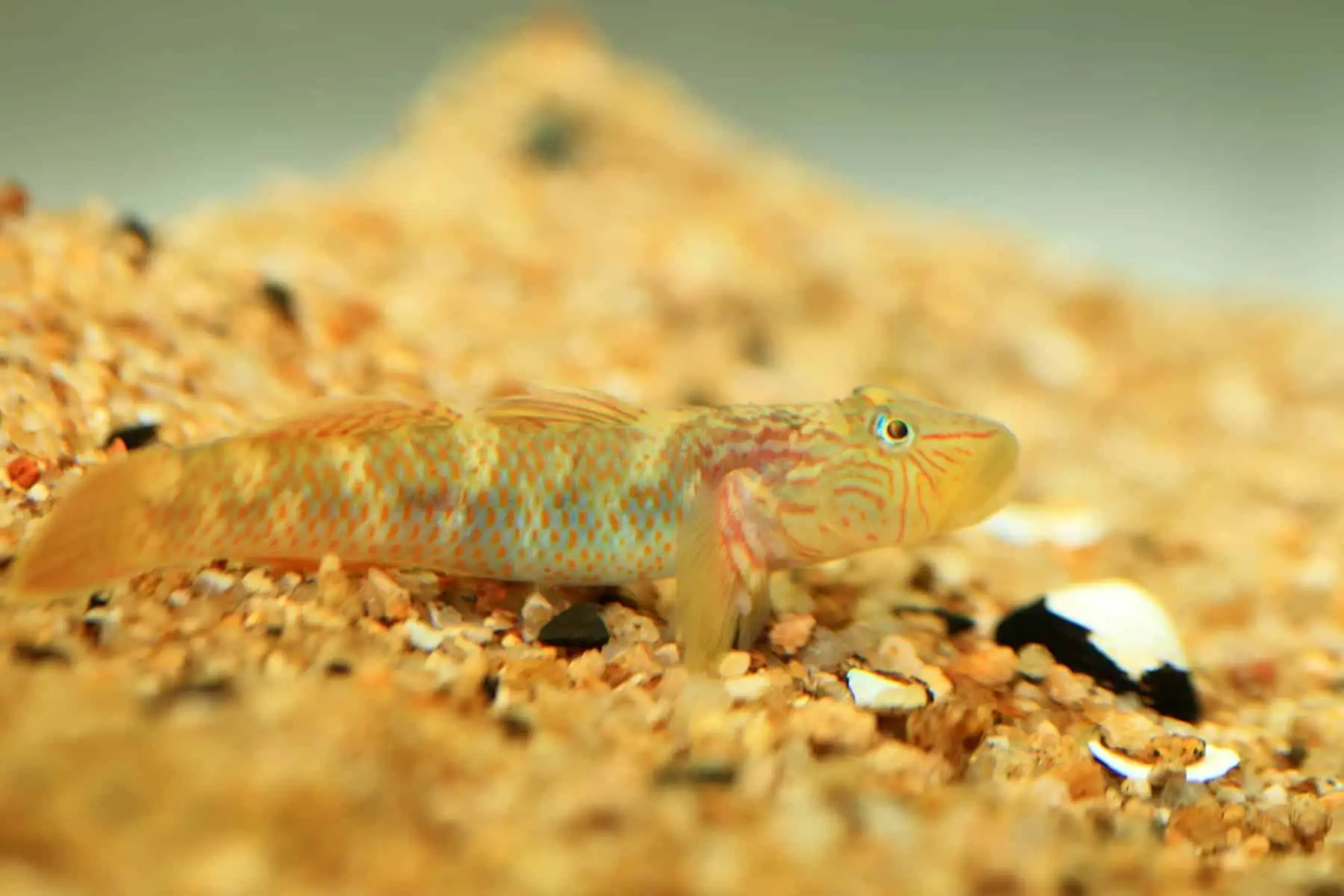
- Temperature: 60° to 79°F
- Minimum tank size: 15 gallons
- Temperament: Peaceful, schooling
- Care requirements: Easy/Beginner
Although they’re actually relatively readily available in many aquarium stores, Rhinogobius duospilus are not commonly kept fish. That’s a shame because these fish are actually a fascinating species that are perfect for display in a small aquarium, being lively and quite interesting to watch.
Gobies from the Rhinogobius genus are naturally found in China and Vietnam, where they inhabit shallow, fast-flowing streams and rivers. In the aquarium, they make a great choice for unheated hillstream set-ups.
As the fish only grow to around 1.5”, you don’t need a big tank to accommodate them. A 15-gallon fish tank is perfect for a small school of these gobies. Rhinogobius duospilus can live in water temperatures of between 60° to 79°F. However, they do best in water on the lower end of that temperature range.
You can keep these attractive schooling fish with other species that appreciate cool temperatures and hillstream-type environments. Peaceful small schooling fish, such as White Cloud Mountain minnows should work well. Don’t forget to set up a live food colony, such as blackworms, as these gobies don’t respond very well to commercial pellet or basic fish flake foods.
In Conclusion
We hope you enjoyed our guide to nine of the best coldwater fish species that you can keep in your home aquarium. If you did, please share!
Although you don’t need a heater for a coldwater aquarium, you still need to maintain the environment properly so that the water stays clean and safe for your fish. However, algae colonies don’t tend to grow as quickly or vigorously in a coldwater tank as it does in warm water, so that’s a bonus!
If you need more information on setting up an unheated aquarium or on the care of any of the fish on this list, leave us a comment in the box below.
Happy fishkeeping!

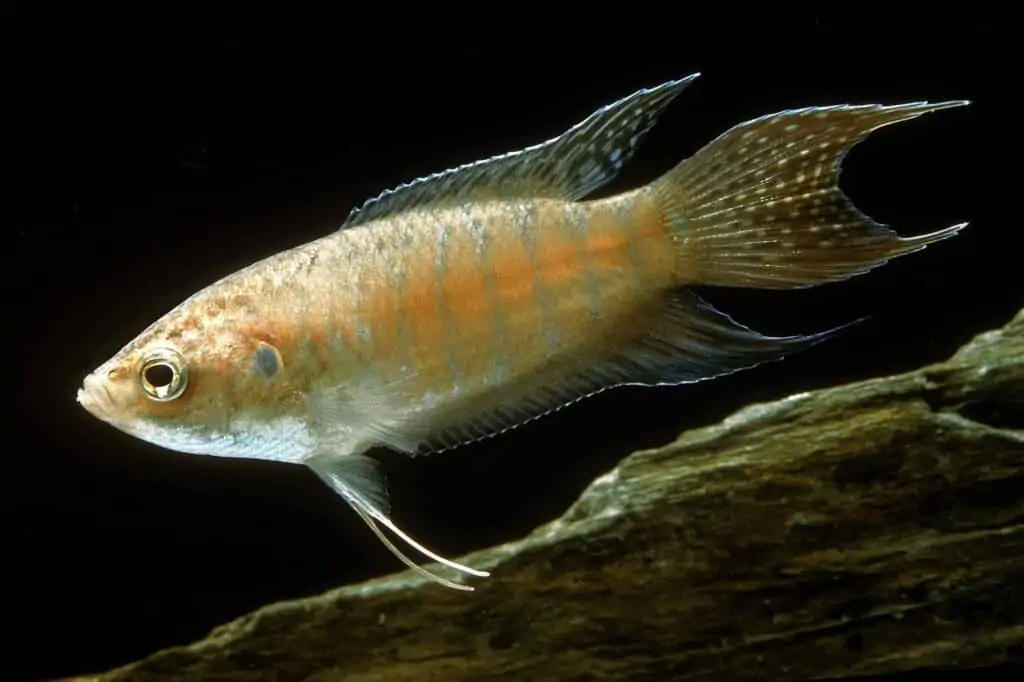

Not to mention how much money you save from a coldwater aquarium. If you have a lot of plants your lighting bill might get high @ 8 hours a day, but compared to lighting and filters heaters use a ton of electricity. Cold water aquariums are a good way to solve this.
Very true! 🙂
Hi I am just starting my first cold water fish tank, Aqua Style 620T, 170lt 79 cm deep, it is in cycling at moment 4 days in, what type of fish would you recommend , don’t really want gold fish, would like unusual and interesting, I like loaches, catfish shrimps, dwarf crayfish, eels and like the look of the paradise fish, please can you give me some advise. Regards Sylvia
Hello! Great to hear you’re going about this the right way doing your research and cycling properly. Goldfish wouldn’t be a great option anyway as they need tons of space so it’s good that you’re looking into other fish. My personal choice if I ever were to set up a coldwater tank would be to go the full hillstream route with super strong flow, rounded algae-covered river rocks and Beaufortia loaches. An awesome opportunity to set up a biotope tank.
If that’s not your think then the paradise fish would have my preference. You can combine them with the lovely, active and colorful white cloud minnow and they might also mix alright with dwarf crayfish.
I hope that helps! Good luck with your new tank 🙂
Hi. Thanks for the fantastic article. We’ve got a 30l coldwater tank with lights and filter. Not set it up yet. Once set up how long do we need to leave u till we add the fish. We are thinking loach, mountain minnows and paradise fish or zebra danios.
Thanks
Hello! Glad you liked the article.
Is that a 30 liter or a 30 long? I’m gonna assume 30 long (30 gallons) because if it’s only 30 liters then none of these fish will work unfortunately. If I was doing this I’d go for the Rhinogobius mentioned at the bottom of this article rather than any of the other loaches, since weather loaches get too big and the hillstream ones need specific hillstream conditions. If you do that, it would be perfect with the mountain minnows and paradise fish (zebra Danios as well might be a bit crowded).
As for how long you need to leave the tank, just follow the instructions on cycling an aquarium here. As that article mentions the exact time depends on your water values. Might be a bit longer with coldwater but nothing extreme.
Good luck! 🙂
I now have the least killifish, perhaps 25-30, hard to tell with the plants in a 16h, many of them babies/fry, and of course in an inside unheated aquarium. A delightful, easy to keep fish!
Thanks for sharing! They do sound like great little fish.
I have a tank with white cloud minnows and zebra danios living together – not actually something I planned for, but I adopted an unwanted goldfish and was given two minnows and a danio along with her – and then of course i had to get friends for the poor lonely things. I have a pretty decent filter current and a bunch of plants in the tank and both species have thrived, but I have found that I need to have a 2:1 ratio of white clouds to danios. The danios are pushy fish and were crowding the white clouds out a bit, but giving the minnows the extra numbers seems to have given them the confidence to hold their own.
It’s super interesting to hear that paradise fish can live with white clouds! I would be dead keen on doing that when I upgrade their tank size next, but the catch would be the danios. I’m thinking perhaps the danios having those bold blue stripes and being less shy fish might mean the possibility of a clash.
Hi! I think you’re right when it comes to combining paradise fish with danios. They are known for being a lot more ‘assertive’ than most schooling fish and can definitely become nippy or cause conflict with the paradise fish. I don’t know what kind of tank the danios and white clouds are in right now, but if it’s an option maybe you could move the white clouds to a new setup with paradise fish and build a new stock around the danios in the old tank?
Keeping white clouds and paradise fish together does sound great, so I hope you can make it work 🙂 be sure to keep me updated!
Now I’m curious, I have an aquarium with white clouds and zebra danios … i wouldn’t consider adding more fish right now, but if at some point in the future when I upgrade their tank size I fancied adding a few paradise fish… do you think they’d be ok with danios?
I know some people keep this combo, it should work. The paradise fish might eat any of the schooling fish they can catch but these are probably both too fast for them. 🙂
I’ll interpret that as a “no” then I’ve been told a bigger fish “probably won’t catch them” before when I had these guys in with my goldfish and I ended up with disappearing fish! Wouldn’t want them stressed by having to evade the paradise fish all the time either. Thanks for the info!
Haha, there’s definitely a difference between goldfish and paradise fish when it comes to that. I would never recommend keeping smaller fish with goldies, that’s a recipe for disaster. I understand the worry about stress, though 🙂
I have 4 tanks, all “subtropical” ie., unheated in the home. Temps can run from a low of 64F to above 80F. I have white clouds, bloodfin tetras, black skirt tetras, and generic platys. I have had fathead minnows, love them, and dojo loaches before I realized how much room they need. The fatheads and rosyreds are not native but are now wild everywhere here as is the dojo loach, which ends up in all the irrigation ditches eventually. I love the unheated tank possibilities and pine for other fish, the least killifish and Florida flagfish among many. This was a great post, thanks.
Gregg